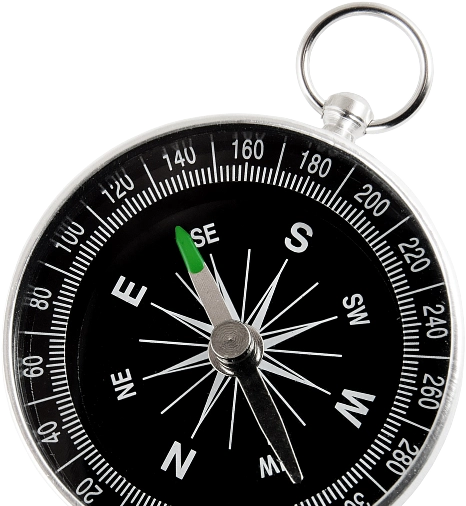6 Ways to Revolutionize Your B2B Digital Experience
15 min

Executive summary:
Many B2B organizations face difficulties meeting modern buyer expectations due to fragmented journeys, outdated UX, and impersonal digital interactions. This article outlines six strategies to transform your digital experience into a buyer-centric growth engine.

Discover how to revolutionize your digital experience and create buyer journeys that establish trust and increase sales.
Economic pressure, heightened buyer expectations, and increasingly complex purchase journeys have pushed B2B organizations to rethink how they deliver digital experiences.
Today’s buyers expect more than surface-level value. They seek seamless, intuitive journeys that support self-guided research, cross-functional collaboration, and confident decision making from the very first touchpoint. Indeed, 80% of clients agree that the experience a company provides is as important as its products or services (Salesforce, 2023).
This article explores six ways to evolve your B2B digital experience, including how to activate omnichannel strategies, improve UX, and create buyer-led journeys that drive revenue.
What is user experience (UX)?
User experience, or UX, refers to how your prospective buyers interact with your brand across all digital touchpoints. In B2B, UX goes beyond website design and is about delivering intuitive, frictionless interactions across digital touchpoints that guide buyers with clarity and ease. Strong UX removes barriers, enables self-service, and supports confident decision making. These factors align closely with the needs of today’s modern B2B buyer journey.
Research shows that experience-driven strategies can deliver a 20% boost in buyer satisfaction, translating into measurable financial impact, including a 15–25% increase in cross-selling rates (McKinsey, 2023). Considering that 75% of buyers would switch to a supplier who offered a better online buying experience (Sana, 2025), investing in UX is essential for keeping prospects engaged and moving through their buying journey.
What is client experience (CX)?
Client experience (CX) is the overall perception buyers form through every interaction with your brand, before, during, and after the sale. It covers all touchpoints, direct or indirect, and is designed to help clients achieve their goals while building trust and loyalty.
Unlike UX, which focuses on usability in digital settings, CX covers consistency, personalization, and value across the entire buyer and client lifecycle. Strong CX strategies, often led by client success teams, create positive journeys that drive long-term relationships and client lifetime value.
Benefits of UX and CX for B2B organizations
How the B2B buyer experience is changing
The expectations of B2B buyers are evolving faster than most organizations can keep up with.
Rather than being swayed by the latest trends, today’s buyers are focused on what delivers measurable business value.
To meet these expectations, B2B companies must rethink how they structure and deliver their digital experiences. Here are some of the core elements that shape the modern B2B buyer journey.
In addition to increased buyer scrutiny, changes in the demographics of B2B decision makers have influenced the importance of providing an optimal digital experience.
Millennials and Gen Z now make up over 66% of senior B2B decision makers (Forrester, 2023). As digital natives, they prefer self-education, independent content consumption, and minimal sales interactions. With 85% of buyers defining purchase requirements before contacting sales (6sense, 2024), organizations must provide seamless, informative, and engaging digital experiences to meet these expectations.
The average B2B buying journey lasts 11 months and continues to grow (Voice of the Buyer, 2025). Consensus buying and defensive purchasing mean directors, IT leads, and managers all weigh in, demanding careful research and cross-team alignment. Success requires addressing every member of the buying group, not just the economic buyer, to avoid lost conversions.
Up to 69% of the buying process now occurs in the dark funnel before a prospect engages with sales (6sense, 2024). During this time, buyers consume content, study experts, and consult partner ecosystems. Brands must guide this early phase with valuable, accessible content so that when buyers reveal themselves, they are already informed and considering their solutions.
Modern buyers rely more on peers, analysts, and experts than sales reps. They value self-guided education at the top of the funnel and expect digital experiences that deliver both business and technical value from the start. With 73% of clients prioritizing omnichannel communication without restarts (Zendesk, 2023), organizations must provide personalized, seamless, and service-led experiences.
Self-directed buyers prioritize brands that simplify the process and enable intuitive digital journeys. Strong UX in design, navigation, and support can significantly increase conversion rates. The key is enabling buyers with the right information at the right time, allowing them to progress at their own pace while building confidence and loyalty.
6 Ways to revolutionize the B2B digital experience
As buying cycles grow longer, decision groups get larger, and expectations rise, the experience you deliver across every touchpoint directly impacts whether you make the vendor shortlist or get overlooked.
Below are six strategies for delivering a strong digital experience that resonates with modern buyers and drives revenue opportunities.
The modern buyer journey is not linear. It is long, messy, and mostly invisible. Buyers now spend six to twelve months researching solutions, often involving six to ten stakeholders across departments (Voice of the Buyer, 2025). Much of this process happens in the dark funnel, where buyer signals are difficult to detect.
According to our research, the majority of decision making teams leverage between four to six pieces of content (Voice of the Buyer, 2025), demonstrating the importance of high-quality content creation.
Mapping the full buyer journey helps you to anticipate what buyers need before they ask. This allows you to build dynamic journeys that adapt based on behavior, preferences, and stage. You can then personalize paths with relevant content and flexible next steps to improve funnel movement.
Today’s buyers expect autonomy, fast answers, and no friction during the early research phase. A well-mapped journey makes your digital experience feel intuitive and responsive, even when buyers remain anonymous.
Aligning marketing, sales, and client success teams around shared CX goals and KPIs makes this effective. Breaking down silos ensures handoffs across the journey feel seamless and well-timed, which strengthens buyer trust and flow.
Here are some key elements to mapping the buyer’s journey:
Modern B2B buyers engage across channels on their own terms. A single decision journey can include 16+ touchpoints per person and over 640 interactions across the buying group (6sense, 2024).
Buyers expect a seamless experience throughout. 73% want to switch between platforms without restarting the conversation (Zendesk CX Trends Report, 2023). These modern buyers expect personalized interactions at every stage.
To meet these expectations, an effective omnichannel strategy must provide value beyond simply showing up across platforms. It needs to connect the dots between them.
Omnichannel success comes down to relevance, timing, and flow. When every touchpoint works together, the buyer’s journey becomes smoother, faster, and more impactful.
Adopting a buyer-first culture is key here. Beyond tracking revenue, success should also be measured by the quality of engagement and client outcomes. Incentivizing teams to prioritize meaningful interactions ensures your omnichannel strategy feels centered on humans, not transactional.
Here are some of the key steps to achieving this:
Below are content recommendations for each funnel stage:
Awareness-building, educational content, such as:
Content that aids decision makers consider their options, such as:
Content that cements your unique value proposition to win opportunities, such as:
Your website is the central destination for your demand efforts, and the most crucial point in the buyer journey. As a result, an effective website must deliver a smooth, value-driven experience that supports independent research and fast decision making.
Modern UI and UX design are critical components of this, and they need to extend beyond visual appeal. They remove friction, guide users to what matters, and support buyer enablement from the very first click.
Key principles of B2B UX performance:
Even when taking a digital-first approach to B2B experiences, buyers want a real connection. They want to feel understood and provided support, not just targeted and sold to.
According to Zendesk, 60% of buyers have chosen one brand over another based on the client-centricity of the experience. Meanwhile, research from 6sense shows that B2B buyers consider an average of four vendors, and each adds at least two additional decision makers to the process. Personalization and empathy are therefore critical to standing out.
How to make your digital experience more human:
Grounding this human approach in real insights makes it stronger. Running regular voice of the buyer programs, tapping sales feedback, and analyzing behavioral data reveal what buyers value most and where friction exists, helping you connect more authentically.
Below are four strategies that can be used to boost client centricity and support personalization at every touchpoint:
The creation of personalized content that empathizes with buyers can be a strategic advantage in a time of proliferation of AI-generated content as the majority of users prefer human-generated content (Statista, 2023). This is especially true due to the buyer's preference trends shifting toward independent research.
Outbound communication should strive to address prospects' psychological needs, as humanized messaging facilitates a stronger connection between prospects and the brand. In addition to traditional B2B focus on data and statistics, outreach efforts should empathize with prospects and strive to alleviate their fears and uncertainties.
Social media platforms can be used to further humanize a brand by providing relatable content that connects with prospects on the human level. Additionally, in today's risk-averse environment social media messaging can increase the brand's credibility and promote trust.
As buyers expect personalized experiences tailored to their needs and pain points, lead nurturing should move beyond generic content and messaging and speak directly to prospects. Use a data-driven approach to segment your target audience and deliver content that is aligned with their stage in the buyer journey and individual role within their organization.
The best digital experiences are never static. Expectations shift, behaviors change, and buyer needs evolve. That is why high-performing B2B teams treat their digital journey like a living product by continuously monitoring, optimizing, and improving it in real time.
Leverage first-party data, behavioral analytics, and direct feedback to identify friction points and surface new opportunities. Tools like journey analytics, heatmaps, and AI-based trend detection can reveal where buyers drop off, what content accelerates movement, and which signals indicate intent.
However, optimization can extend beyond internal analysis. Your best feedback will come directly from clients and prospects. Consider establishing structured, repeatable loops to gather it through:
Creating a review cadence, assigning ownership, and building a framework for prioritizing to action feedback quickly helps manage these actions. This ensures your digital journey stays aligned with what buyers actually want, rather than predictions.
Once improvements are made, communicate them clearly to show your buyers that you are listening. Sharing changes and enhancements can be done across:
When you show buyers that their input leads to real improvements, you reinforce trust and build advocacy. This is when your digital experience becomes a signal of how your company operates.
Consistent iteration, clear communication, and buyer-first execution are how great digital journeys evolve and how good companies become preferred partners.
Modern buyers value autonomy. They want the freedom to explore solutions, compare options, and access the information they need without unnecessary barriers. When digital experiences slow them down, they do not wait. They move on.
The most effective B2B brands design journeys around self-service. That means removing friction, reducing dependency on sales as gatekeepers of information, and giving prospects fast, direct access to the resources they are looking for.
Here are some of the most effective tactics to achieve this:
Key takeaways
Craft B2B digital experiences that deliver business outcomes.
INFUSE demand experts are ready to create demand strategies designed for complex, buyer-led journeys and meeting your performance goals.
Whether you are looking to surface buyer signals, enable decision making with high-value content, or deliver engaging omnichannel experiences, our team is here to help.












